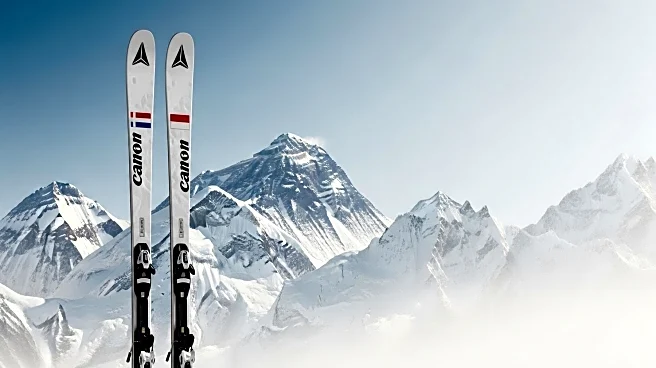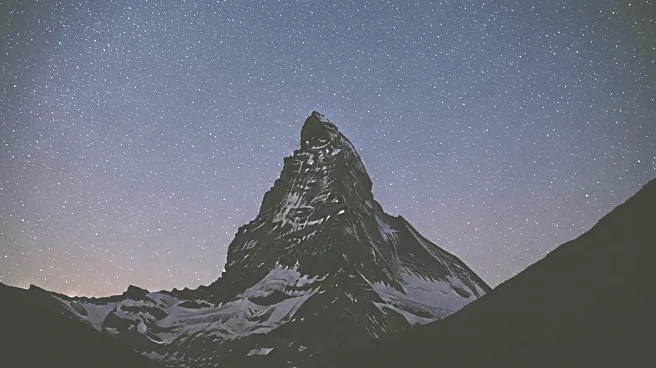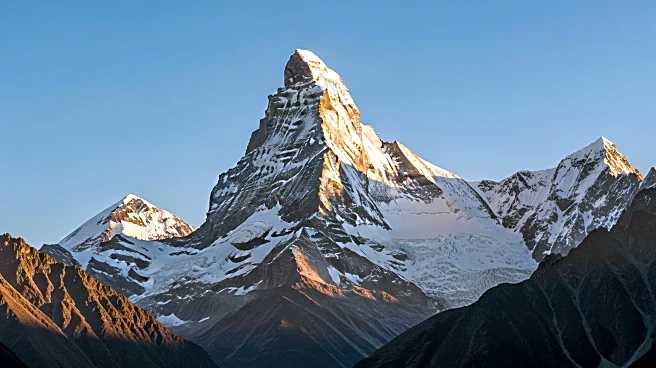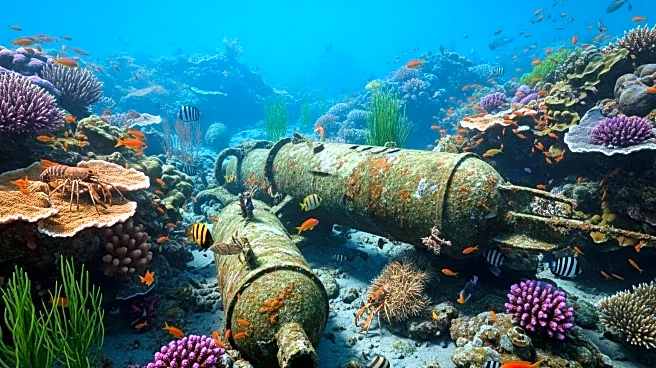What's Happening?
Andrzej Bargiel, a 37-year-old Polish adventure skier, has made history by becoming the first person to climb Mount Everest and ski down without using supplemental oxygen. This remarkable achievement was completed on a Monday, as announced by Bargiel and his sponsors. The ascent from base camp took four days, followed by a two-day descent. Videos from the summit, where oxygen levels are significantly lower than at sea level, show Bargiel breathing heavily even before beginning his ski descent, highlighting the extreme difficulty of the task. While over 7,000 climbers have reached Everest's summit, only about 200 have done so without bottled oxygen, making Bargiel's feat particularly noteworthy.
Why It's Important?
Bargiel's accomplishment is significant not only for its physical and technical demands but also for its contribution to the history of mountaineering and extreme sports. By completing this feat without supplemental oxygen, Bargiel has pushed the boundaries of human endurance and capability in high-altitude environments. This achievement may inspire other athletes and adventurers to pursue similar challenges, potentially leading to new records and advancements in high-altitude sports. Additionally, it underscores the importance of physical conditioning and mental resilience in extreme conditions, offering insights into human performance limits.
What's Next?
Following this historic achievement, Bargiel may receive increased attention from the global adventure sports community, potentially leading to sponsorship opportunities and speaking engagements. His success could also spark interest in further exploration of high-altitude skiing and mountaineering without supplemental oxygen. Other athletes may attempt to replicate or surpass his feat, leading to a new wave of high-altitude challenges. Additionally, Bargiel's methods and training regimen could be studied to enhance understanding of human performance in extreme environments.
Beyond the Headlines
Bargiel's achievement raises questions about the ethical and environmental implications of extreme sports on Everest. The increasing popularity of such feats may lead to more traffic on the mountain, raising concerns about environmental degradation and the safety of climbers. Furthermore, the pursuit of records in such dangerous conditions highlights the need for discussions about risk management and the responsibilities of athletes and sponsors in promoting safe practices.










